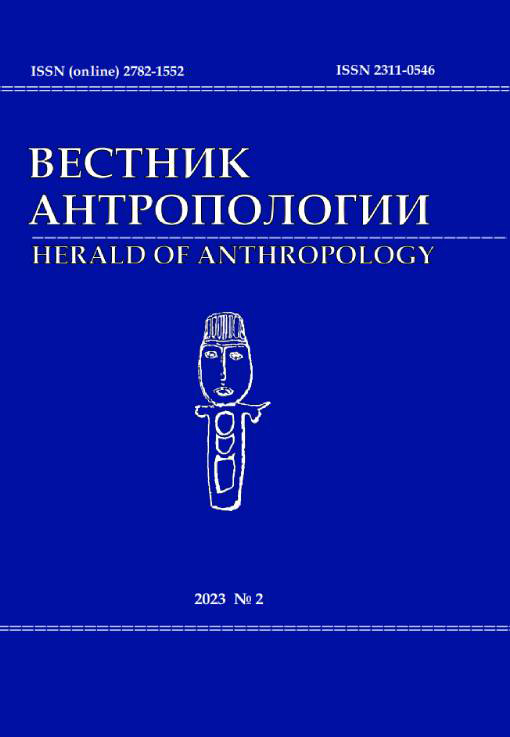Апотропеические образы восточноевропейского скифского звериного стиля
DOI: 10.33876/2311-0546/2023-2/86-104
Ключевые слова:
апотропеический образ, итифаллический образ, зооморфный образ, скифский звериный стиль, фаллический символАннотация
Статья посвящена актуальной проблеме семантики образов скифского звериного стиля восточноевропейской зоны. Проблематика охватывает вопросы характерных мотивов и специфики приёмов моделирования скифских зооморфных изображений. Объектом исследования служат 39 изображений, оформляющих или украшающих золотые нашивные бляшки из археологических памятников и местонахождений, локализуемых в пределах восточноевропейской зоны. Использована комплексная методика, включающая традиционный иконографический, формально-стилистический и структурно-семиотический методы, а также приёмы общенаучного гипотетико-дедуктивного метода. Новизной в исследовании является анализ моделей зооморфных и монструозных образов в аспекте характерных мотивов, использованных для создания итифаллических изображений в эротических сюжетах и их стилизации в виде животных. Проанализированные изображения «горного козла», «лосекозла» и «хищника» содержат комплексы мотивов, которым присуща смысловая двойственность: они создают образы «реальных» и «монструозных» зверей, и в то же время – итифаллические образы, являясь их стилизацией в образах животных. Художественный приём заключается в имитации реальности и метафорическом сдвиге, в результате чего происходит совмещение «реалистических» и «метафорических» изображений. Доминантой изображений является апотропеический итифаллийческий образ. Результаты систематизации мотивов итифаллических образов и их моделлирования будут использованы для сравнительного исследования всех зон скифо-сибирского звериного стиля.






















